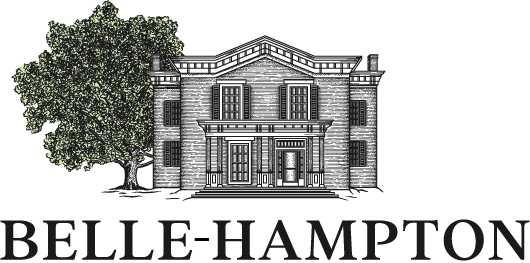Renovate or Restore a Historic Structure? One Family's Quest
Our family’s journey started five years ago when we bought Belle-Hampton Farm. We have since restored the Bank Barn, the Cottage, the General’s Store and now the Belle-Hampton House. All the structures are historic landmarks which takes time and thought to the planning the renovations. But did we actually restore the structures or renovate them? And why is it important to preserve the historic structures?
When we look at the definition of renovate by the dictionary definition, “restore (something old, especially a building) to a good state of repair.” Restore is actually part of the explanation. Using that annotation, we did renovate the structures. The first structure, the Bank Barn had water damage causing the floor to be unstable. The crumbling masonry contributed to the difficulty of the repair. Hiring professionals that specialize in historic architecture was key to the renovation.
The Cottage presented different challenges. The core of the building was built in 1826, a two story cooking and cleaning facility. Over time, two side additions were built around the 1930’s. One side with the purpose of being a garage never accounted for a car making the turning radius of that era. It eventually turned into a kitchen. Some time later, most likely the late 1960’s or early 1970’s after a transfer of ownership to another family member, a family room was added on the backside of the structure. Since the layout was an eclectic combination of additions through eras, choosing a time frame to renovate it to was unrealistic. Instead, a plan was laid out for best use of the rooms by opening up the backside of the original house into the family room. The 1970’s tongue and groove pine boards were removed taking the historic building down to the brick. The thoughtful renovations came with help from skilled craftsmen, designers and builders bringing a refreshing feel to the home and the farm.
Renovating the General’s Store came with some demolition participation from us. Knocking down walls can be reinvigorating. A structure who’s only heat source was a wood burning stove and the smell of abandonment, a refresh was in order. From knocking down the walls, we concluded the last renovation was in the 1960’s. The vision of the use of the structure evolved over the renovations, but settling on an Airbnb seemed to be the most plausible. Although the final design only allows for limited amounts of guests, we developed a certain niche of guests; parents visiting students at Virginia Tech or Alumni of Virginia Tech coming back for sporting events.
The Belle-Hampton House which is the center of the Historic Landmark needed much more care and planning to preserve the history. The center of the house was constructed in 1826-1827 in the Federal Style, popular for that period. Added in 1879, the grand two story entrance was designed in an Italianate style. The back kitchen addition was early 1930’s as well as the bathrooms which hadn’t been operating for years. So which era do you choose to renovate toward, but still use the structure for a useful purpose?
The builders, designers and historians helped us develop a plan. The front portion of the structure was focused on an 1879 style since we could restore many of the antiques left in the house from that period. The main section was to be preserved as much as possible with its original trim work, doors, flooring, fireplaces, etc. from the 1826 time frame. It was impossible to preserve 100% since we had to alter some things for heating/air-conditioning and electricity. The bathrooms and kitchen were mostly a complete gut, however, the 1930’s style was kept as a guide for selections. Although new windows were installed, the masonry and the roof were restored to last for generations to come.
So did we restore or renovate the historic structures to preserve them for the future? According to the National Trust for Historic Preservation, “preservation” aims to maintain a home’s form. Renovation or “Rehabilitation” makes a home usable while keeping those elements that are significant to the history or culture of its time. “Restoring” is to return a home to the style represented by a particular time period, using original or similar materials.
By those definitions, when something needed replacement such as the windows, we copied the current style “preserving” the home’s form. We “renovated” the kitchen and bathrooms to make the home/office usable for our clients and guests. And we “restored” the front Italianate style by refurbishing what was already there and only replacing the baseboards with a similar material to allow for electricity. The vision to protect the family history as well as the historical significance of the houses is why the careful planning was important. To honor those before us.
The structures once feared to be abandoned forever by the community, historians and numerous relatives, were now revived for generations. The restoration was our family’s journey over the last five years, but would not be possible without our clear vision, intentional pursuit and family harmony to keep moving the flag forward. We now can share our story and help others to do the same. How can we help you with your family’s journey?

